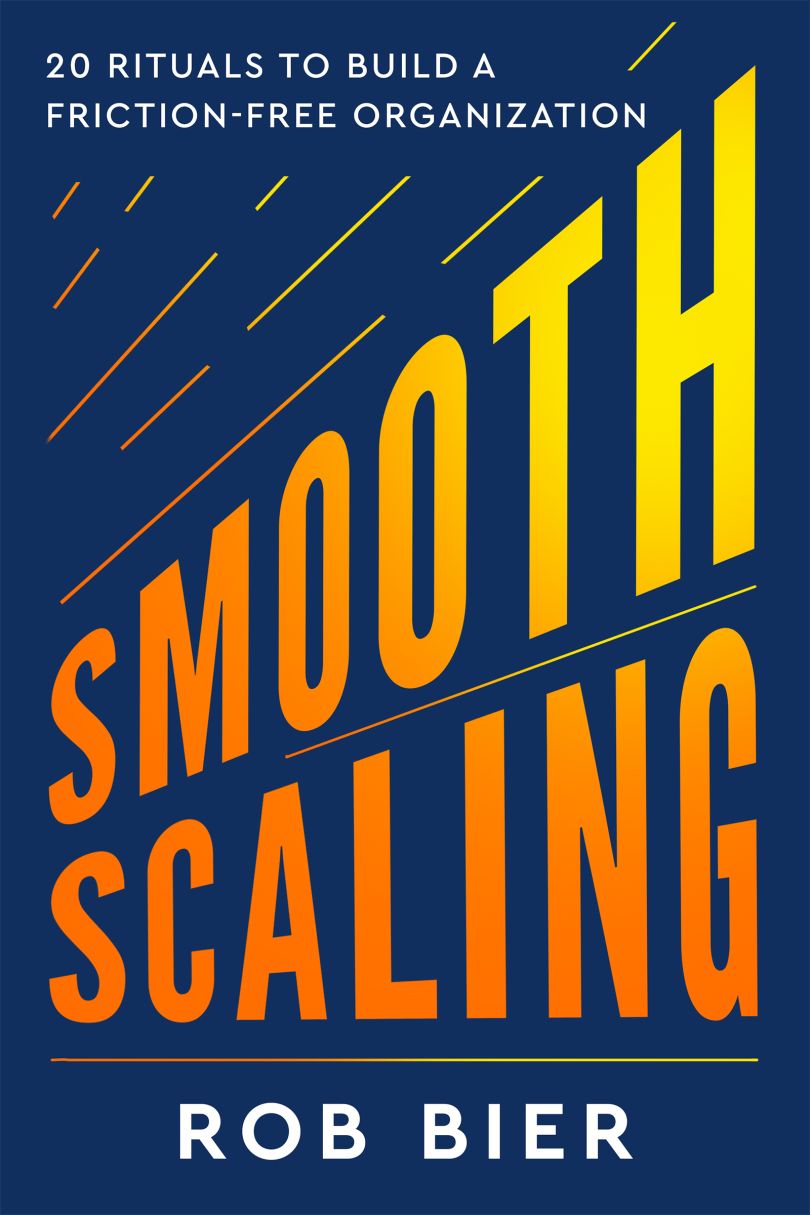As organizations grow, they tend to get in their own way. Decision-making slows down. Conflicts emerge. Meetings grow longer, less focused and less productive. Silos develop. Managers spend more of their time handling people and organizational issues and less on business opportunities. In short, friction has begun to slow your company down.
Why does this happen?
To understand this, let’s look at what I call a Day Zero organization. To illustrate the concept, I’ll use a startup, but it could just as well be a new team or department in an existing company. This is based on real-world clients, but the names of companies and individuals have been changed.
5 Ways to Scale Successfully
- Build trust and familiarity between colleagues.
- Keep everyone on the same page.
- Create a team culture.
- Encourage employees to respect one another’s work styles.
- Align priorities and incentives.
Day Zero at OptiRoute
“Our first year at OptiRoute was just awesome.” That’s Dr. Arthur Chen talking, co-founder and chief executive officer. Arthur had pulled together a small team of engineers and data scientists to commercialize the AI models he’d developed while doing his PhD. The company was formed to apply these to the transportation industry, focusing initially on trucking. Arthur knew he had the makings of a star team when he convinced his fellow doctoral candidate Julia Perez to run engineering and his old friend Michael Hughes to run product.
In a Day Zero organization, there’s no confusion about who is working on what or who to go to when you need information.
Starting out with just a few other people, they worked tirelessly. At first, they didn’t even have an office — they mostly worked out of Arthur’s dining room in Austin, Texas, or at a local coffeehouse. Everyone knew what everyone else was working on, how the different parts should come together, and who to ask if they needed help. There was no “us” and “them,” no factions or even departments, just one unified team of people inspired by a common mission. Everyone was fresh, energized and pumped. In short, like many Day Zero organizations, OptiRoute started out frictionless.
Soon, the company was beating its milestones, and Arthur’s investors were encouraging him to raise more money to grow faster. During the second year, the business started to accelerate. After closing a sizable new round of investment, Arthur and the team went on a major hiring spree.
But with the addition of each new hire, product, location and department, the complexity of the OptiRoute organization grew. Arthur didn’t see this as a problem... until he did. Around the time they reached one hundred people, he started to hear more and more complaints: about how long it took to get decisions made, about resource conflicts, about the amount of time spent in never-ending meetings.
But the moment the problem came into focus for him was when his co-founder Julia said they used to ship new product faster when the company was half the size it was now — and Michael agreed. Friction had reared its ugly head. The magical qualities of Arthur’s Day Zero organization were gone.
What Was So Right and What Goes Wrong
In a Day Zero organization, everything just seems to work. So, what exactly is going on here, and how can you recapture or retain that magic in a much larger organization? Let’s go back and examine what made OptiRoute so effective in its early days.
1. Everyone Knew and Trusted Each Other
Arthur started out with two co-founders he’d known for a very long time. That meant they naturally trusted each other more than if he’d hired executives he didn’t know. They could be very direct with each other, disagreeing or giving tough feedback, but they never questioned each other’s support. The seeds of a culture were already being sown.
As early hires trickled in, they rapidly picked up on that culture. Long hours, shared meals and bad jokes brought the team close as they worked to figure out their new business. Familiarity bred trust, which in turn meant that new joiners soon felt safe to share feedback, challenge decisions and ask awkward questions. Somehow, the more they did this, the more trust they felt.
But as the team grew larger still, it wasn’t possible for everyone to get equally well acquainted. Relationships no longer grew by default. Michael was excellent at encouraging people to spend time with and get to know each other on a personal level, but the other leaders didn’t emphasize this. Once Terry and his Memphis-based team joined, people stopped assuming that they could have a personal relationship with everyone and focused on the work.
2. People Knew What Was Going On
In a Day Zero organization, there’s no confusion about who is working on what or who to go to when you need information or a decision. As a result, communication, coordination and decision-making happen naturally and effectively, without any formal design.
But as the company took on more people, projects and especially locations, it became impossible for everyone to know all that was going on or who was responsible for what. There were lots of trade-offs to be made about resource allocation and prioritization. The more complex the organization became, the more people brought these questions and decisions to Arthur because he was the only one with the entire organizational overview. But he soon became a bottleneck.
3. Everyone Felt Part of a Single Team
When people joined OptiRoute in the early days, they didn’t really join a department or team, they joined the company, and that’s where their loyalties lay. Luckily, the culture at OptiRoute kept people feeling that way for a long time, but at the point that Arthur launched the air cargo business, it started to change.
By that time, the original trucking team was generating revenues and had demanding targets, so they felt they should have first call on any shared resources. But the air cargo business was still in prototype. Terry needed lots of support from the engineering and data science teams in Austin, but as a newcomer, he didn’t get the level of support and responsiveness he felt he should have, and his team grew frustrated.
Over time, this evolved into an “us and them” subculture. Not long after that, Arthur heard someone say that “those damn guys in Memphis are always griping” — a wake-up moment that something was wrong.

4. Colleagues Learned How to Work with Each Other
With the intensity of working side by side all day and into the evening, it didn’t take long for people to figure out each other’s personalities, strengths, quirks and preferred ways of working. Julia was detail oriented, wanted things in writing and insisted others do the same. Arthur wanted to hear creative ideas about how the product could be better and was happy to spend hours brainstorming at a whiteboard. Hasan, an early engineering hire, needed things explained carefully, but once he got it, his productivity was off the charts.
But as the company grew, people increasingly worked with folks they didn’t know well. As Julia’s engineering department rapidly outstripped the others in terms of headcount, her meticulous approach and insistence on documentation soon became the dominant way of working. Others just had to fit in.
5. Priorities and Incentives Were Aligned
OptiRoute’s Day Zero team had no confusion about what needed to be done. The company’s must-win battles were as clear as could be, and everyone knew what their role was in accomplishing these.
Later, as the company grew, things became less clear. In response, Otto, the HR director, introduced objectives and key results and decided that executives’ performance should be assessed in part based on their OKRs. Although in theory this may have been a good way to align departmental priorities, in practice things changed too quickly. Soon, most employees had far more clarity about their own department’s priorities than they did the company’s.
I could keep going. Day Zero organizations have many advantages that are largely the result of being small, but because they occur naturally, we tend to take them for granted. What causes these advantages to slip away, and why do leaders of high-growth companies rarely see it coming? One simple fact: Head count grows linearly, but organizational complexity grows exponentially.
Excerpted from Smooth Scaling: 20 Rituals to Build a Friction-Free Organization.





